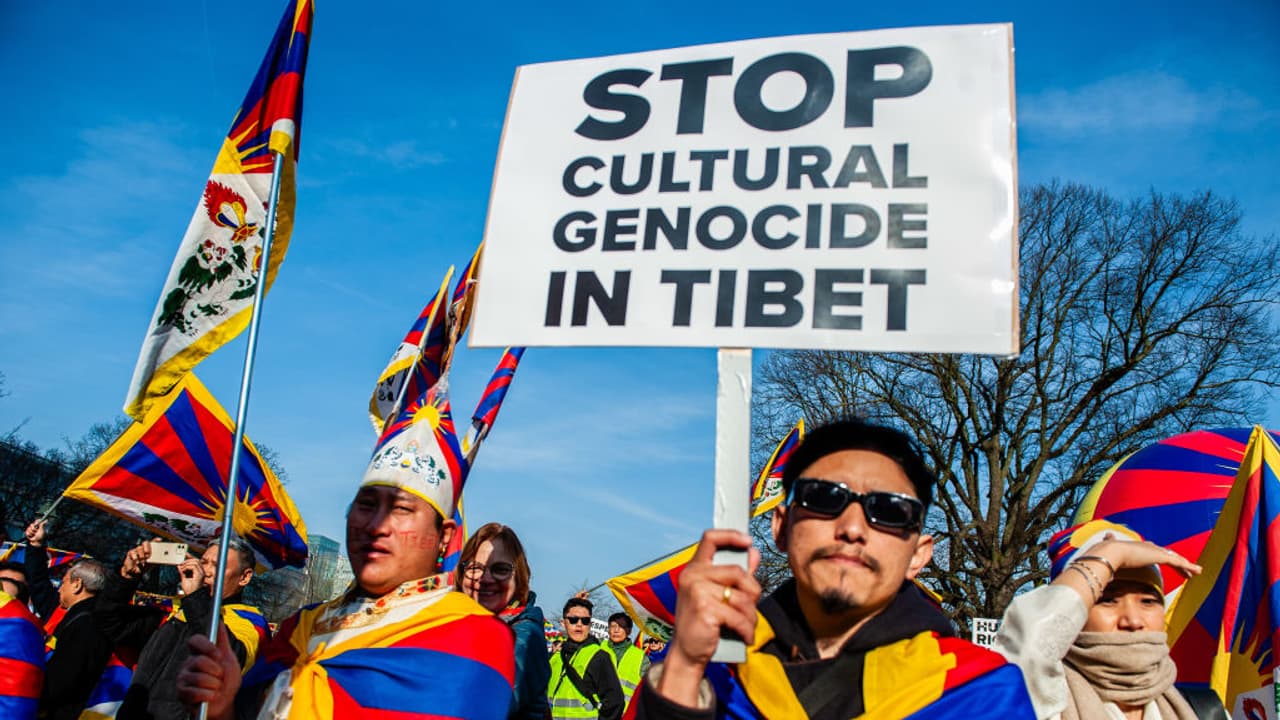Village and private Tibetan language schools are shut down, ending Tibetan-medium education for most. By excluding family, community, and native language from early schooling, China erodes the transmission of Tibetan culture.
China’s campaign in Tibet is a deliberate effort to erase a distinct culture, fought not just through crackdowns but a quiet war on language and faith. The new battlegrounds are classrooms and monasteries, where the Communist Party aims to reshape Tibetan minds and dismantle ancient traditions.
Mandating Mandarin as the only language in Tibetan schools is a clear move to cut cultural ties. Despite international protest, nearly one million Tibetan children have reportedly been placed in government-run boarding schools, where classes are primarily in Mandarin and Han-centric stories dominate.
Village and private Tibetan language schools are shut down, ending Tibetan-medium education for most. By excluding family, community, and native language from early schooling, China erodes the transmission of Tibetan culture.
Beijing justifies the Mandarin rule as fostering “national unity” and modernization. To Tibetans, this is forced assimilation and cultural destruction. Human rights experts, including those from the United Nations, condemn it as a violation of education and cultural rights. With 78 percent of Tibetan children now in boarding schools, fears rise that they will lose connection to their heritage.
Early childhood boarding schools—often mandatory in rural areas—speed this process. Children as young as four spend most of the year away and return unable to speak Tibetan or connect to their families’ lives.
This erasure extends into Tibetan Buddhism—the heart of Tibetan identity. Since President Xi Jinping’s order to “Sinicise” all faiths, the Communist Party has reshaped monasteries and religious life to fit state ideology.
Monasteries are overseen by party agencies; police and cadres are stationed inside. Monks and nuns attend “patriotic education” sessions that require party loyalty and denounce the Dalai Lama.
Portraits of Communist leaders replace revered Buddhist figures. The training and appointment of religious teachers are tightly regulated. Sacred texts are translated into Mandarin, losing Tibetan nuance, while authorities control the search for reincarnate lamas to break religious continuity.
These are not mere administrative steps. They transform Tibetan religious life, aiming to uproot unique authority and embed CCP doctrine in spiritual practice. The party weakens resistance by stripping Tibetans of the spiritual framework anchoring their identity.
China’s education and religious policies in Tibet operate as parallel engines of assimilation. Mandatory Mandarin marginalises the Tibetan language and severs bonds; Sinification of Buddhism subordinates spiritual life to the state.
(Ashu Mann is an Associate Fellow at the Centre for Land Warfare Studies. He was awarded the Vice Chief of the Army Staff Commendation card on Army Day 2025. He is pursuing a PhD from Amity University, Noida, in Defence and Strategic Studies. His research focuses include the India-China territorial dispute, great power rivalry, and Chinese foreign policy.)
Disclaimer: The opinions expressed are solely those of the author and do not reflect the views or stance of the organization. The organization assumes no responsibility for the content shared.
